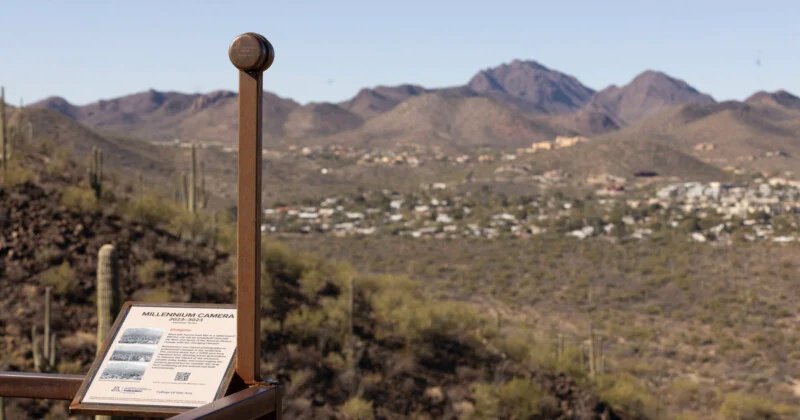Imagine a photograph spanning a thousand years, a single image capturing the slow dance of change across a landscape. No, it’s not science fiction – it’s the ambitious vision of the Millennium Camera, a project defying the boundaries of time and photography.
In the year 3023, individuals may have the opportunity to explore this historical perspective through the Millennium Camera project. Nestled amidst the sun-baked hills of Tucson, Arizona, stands this unassuming steel contraption. But beneath its simple exterior lies a revolutionary concept: a pinhole camera designed to capture a 1,000-year-long exposure of the surrounding desert.
A Symphony of Light and Time:
The camera’s magic lies in its ingenious simplicity. A pinhole aperture, smaller than a needle’s eye, allows a sliver of sunlight to fall upon a light-sensitive surface made of rose madder, an oil paint pigment. Over centuries, this light will slowly fade the pigment, recording the ever-shifting scene outside. Mounted on a steel pole and aimed at a Tucson neighborhood, the controlled light exposure is expected to create varying fades, producing a unique image over time.
A Legacy for the Future:
The project, conceived by experimental philosopher Jonathon Keats, isn’t just about capturing a photograph. It’s a thought experiment, a conversation with the future.
The ambitious Millennium Camera faces challenges, questioning its survival against weathering and technological shifts. The durability of the rose madder pigment, capturing light and shadow nuances, adds to the uncertainties, turning the project into a speculative gamble on the future.
Even if the camera doesn’t create the expected image, it still makes us think. It reminds us to consider what might happen in the long run because of what we do today. It encourages us to look beyond the present and contemplate the legacy we’re leaving behind.







